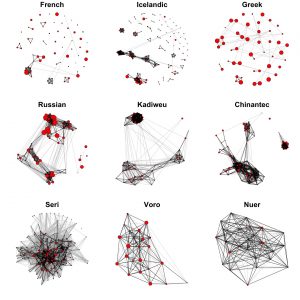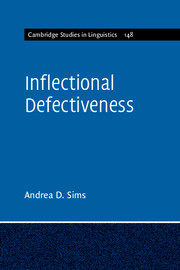Grace LeFevre, Micha Elsner and Andrea Sims had their paper “Formalizing Inflectional Paradigm Shape with Information Theory” published in the Proceedings of the Society for Computation in Linguistics, vol. 4. The paper is based on Grace’s B.A. thesis work. She did really impressive work and we are happy to see it make it out into the world!
Abstract: “Paradigm shape,” our term for the morphological structure formed by implicative relations between inflected forms, has not beenformally quantified in a gradient manner. We develop a method to formalize paradigm shape by modeling the joint effect of stem alternations and affixes. Applied to Spanish verbs,our model successfully captures aspects of both allomorphic and distributional classes.These results are replicable and extendable to other languages.



